My Story As Told By Houses: Part 1, The Soddy
Legendary framer Larry Haun recounts the experience of living in a sod home as a child.
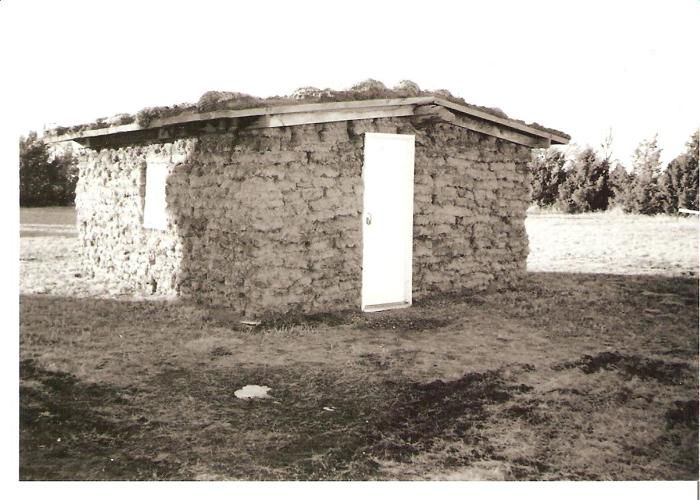
“We did not think of the great open plains, the beautiful rolling hills and winding streams with tangled growth as wild. Only to the white man was nature a wilderness, and only to him was the land infested with wild animals and savage people. To us it was tame. Earth was beautiful and we were surrounded with blessings of the Great Mystery.”
—Luther Standing Bear, Sioux Chief
Not everyone lives in a wood-frame house warmed with a central heating system and containing double-glazed windows, Hardi-plank siding, and solar panels for electricity. There are other ways to build our homes. Nipa huts, for example, are ideal for the Pacific islanders living near the equator. Made of bamboo and covered with thatched roofs, they allow breezes to pass through and ease life lived in heat that can be oppressive.
Tepee structures made of long poles and covered with hides meant that the Native peoples of our Great Plains could take their home with them as they followed the migrating bison. Mongolians too have a mobile home. The yurt has a lattice structure made of wood pieces brought from the lowlands. The traditional felt cover comes from sheep wool. A yurt can be taken apart and carried on the backs of yaks as these nomadic people follow their herds to different feeding grounds.

Chimney Rock in western Nebraska was a major land mark for pioneers headed west to Oregon and California.
The Qero people live in the high Andean mountains of Peru far above the timberline. These descendents of the Incas build their homes out of rocks. Further south in the lowlands of Chile, the Mapuche live in rukas, round buildings made from the plentiful wood in their part of the world. Many people in El Salvador still live in their traditional earth-pole homes.
People need a place to live and love, a shelter where they can eat, sleep, and carry on their family activities.
Throughout history and in places throughout the world, their buzzwords were not “Build locally and sustainably,” but that is what they were doing. They couldn’t bring in lumber from Oregon, siding from Australia, drywall from China, and tile from Italy. The materials they used—earth, snow, bamboo, and grass—came back year after year. They were green builders of the first order.
And so it was with the birth house of my mother, Elizabeth Brennan. She was born in 1897 in a one-room sod house. It was located not far from the North Platte River (“too thin to plow, too thick to drink”) near a small town named Lisco in western Nebraska. Lisco was named after Rube Lisco, an early cattle rancher in the area and employer of my grandfather. Not far downriver is located Chimney Rock (photo), that landmark sandstone spire that let pioneers on the trail to California and Oregon know their location.
This vast inland sea of grassland was the traditional home of the Lakota and Northern Cheyenne peoples. Can any of us feel how painful and frightening it must have been for those who had lived on these plains for hundreds of years to suddenly be seen as trespassers? One day they rode freely in search of good water, good hunting, and a place to camp and care for their children. The next day the prairie was being invaded by settlers who were putting up houses and fences saying this land is mine! Native people knew that they belonged to the land. They saw the land as the source of life, not of profit. How could the land belong to them or someone else?
It has always seemed strange to me how we can think that a plot of this earth we live on could actually be owned by anyone. It’s sort of like owning air. But really, can a piece of this isolated planet that exists in a galaxy of 100 billion stars be owned by me? This sounds sort of like an offer from someone who wants to sell me the Brooklyn Bridge. The earth has been in existence for 4 billion years, or so I am told. We as a people have been around for 250,000 years, maybe more. So who owns whom?
Earth has given us clear notice that it doesn’t need us, but that it will allow us to be renters here as long as we behave ourselves. If we misbehave, we will receive an eviction notice and forfeit our cleaning deposit. As temporary residents, we have left quite a mess in our wake: foul air, denuded mountains, toxic-waste dumps, clogged salmon streams, and melting icecaps, not to mention poverty and hunger. A pretty impressive list that may not make our landlord happy!
The Homestead Act, passed by Congress in 1862, opened up huge, virgin tracts of Native land to immigrants hungry for a place to live and put down roots. If you were 21 or over, you could settle on 160 acres, live there for five years, and be granted full ownership. This was the reason for the huge migration of people in our country. By 1900, 600,000 homestead claims had been filed. Staking a claim meant that every settler had to build some type of home on “their” land and survive through some difficult times before they became the owner. The majority of these settlers “starved out” and didn’t make it beyond two years before moving on. An uncle told me that there would come a day when some just gave up either from hunger, discouragement, or loneliness. When that day came, they hitched up a team to a wagon, loaded a few possessions, and left everything else behind—house, chickens, hogs, and horses—and went “back home” or headed further west.
The early takers were from all walks of life: businessmen, farmers, tradespeople, and women with their children. All were hungry for land and a new life. They had first choice of the rich, flat, bottom lands along the Platte and other rivers that are abundant in Nebraska mainly in the eastern part of the state. This ideal farmland was great for raising what is now its signature crop: corn. There were some trees in those parts for log-house construction, especially along the waterways.

Family roadtrips were a lot different in the 19th century. This is part of my Mother’s family on the move from Missouri to Nebraska.
The later folks, like my mothers’ parents, who arrived in 1891, had to push on farther and farther north and west, to the rolling hills covered by the prairie grasses on the high plains. They made the long trip out of Missouri with their children, a few possessions, and lots of dreams, all hauled by team and wagon. Once there, they staked out their claim; unloaded their farming tools, cooking utensils, a few clothes, and bedding; and readied themselves for hard work and tough times.
Even today, when you drive through those grasslands, you will notice the scarcity of trees. Many people called it the Great American Desert. My grandmother said that there was not one tree in sight either on the prairie or along the river. As the saying goes, there were miles and miles of nothing but miles and miles. It’s hard to be a tree-hugger in that part of the world. It was easy, especially at night, to become disoriented and lost without these landmarks to guide you home.
We have forgotten what it means to be out in the dark of night. Most of us live in the city, where night has been turned into day. Even in the country, we are never far from an electric light bulb. But stand in the middle of the Great Plains far from a farmhouse on a moonless and starless night and try to see your hand in front of your face. “It’s as dark as a stack of black cats” was a common saying. On those nights, the only directions you can know for sure are up and down.
So without trees, these early settlers had few poles or sawn wood to work with. The only building material readily available was the earth lying underneath their feet. Pachamama, as they say in Peru—Mother Earth. This high plains earth was solidly held together by roots produced by hardy winter-tested grasses like the little blue stem, Indian grass, and buffalo grass, named after the millions of bison that had been grazing this land for thousands of years.
The first settlers used shovels to cut out sections of earth, called sod. Gathering sod strips, planting fields and gardens, and caring for themselves, their children, and their farm animals was hard work, to say the least. In the 1880s, the breaking plow with a curved steel cutting blade, called the “sod-buster,” became more common. This plow laid long strips of sod, 12 in. wide and 4 in. thick, over flat. My mother’s father harnessed this plow to his team of workhorses and cut pieces for his own sod house. Technology came to the rescue.
This is what I sometimes hear today—that technology will get us out of the earth-warming, poverty-ridden, overpopulated mess we find across our small planet. What is it that makes me doubt that statement? Maybe it is my feeling that the changes we need today will come not from the head, but from the heart. I sometimes think of what Lily Tomlin once said: “Things will most likely get worse before they get worse.” That seems to be the trend.
The earthen sod strips, called “Nebraska marble” by some, were cut into lengths about 3 ft. long, measured out by a notch on the handle of a shovel or axe. Each strip weighed about 50 lb. These were loaded onto a wagon and hauled by a team of horses or oxen to the chosen building site. People tried to pick a site that was on the lee side of a hill, if that was available, to offer some protection from the winter winds. The actual building size was laid out by “stepping off” the dimensions. Ten full steps on one side measured around 30 ft. Corners were marked with stakes, and the diagonal was stepped off to square the building.

Like laying brick, only dirtier — litterally. This Nebraska marble is also quite a bit heavier than brick. As with masonry or log construction, pay attention to the corner details.
Once the sod strips arrived at the site, they were laid grass side down, two strips wide, which made a solid barrier to the cold wind and winter snow. The second course started with half a sod strip to lock the courses together (see the drawing above). Special attention was given to the corners, making sure the sod strips interlocked. Every three or four courses, a row of sod was laid in the opposite direction to tie the two layers together and to stabilize the walls that were built up to around 6 ft. or so on the low side to 7 ft. on the high side. Walls of different heights gave the shed roof a minimum of pitch or slope.
Holes were left for a single door, often to the south, and two or three small windows to the east and west. Windows were the most expensive part of a “soddy” and were often hard to come by. For further protection from the icy winds that blew across those treeless plains, no openings were put in the north side. The sides of the layered sod were smoothed and evened out with a shovel. Any crack that could let in the wind was filled with mud. At times, after the sod had settled for a year or so, the walls were plastered with a mixture of water, clay, and ashes from the stove. Kalsomine, or whitewash, made of lime, chalk, and water all mixed together, could be used to brighten up the interior.
My mother reckoned that her one-room house was around 16 ft. by 30 ft. These, of course, were the outside dimensions. With walls 2 ft. thick, inside dimensions were 12 ft. by 26 ft.—312 sq. ft. of living, sleeping, eating, and cooking space. This is about the size of a living room by today’s standards. Some privacy was offered by closing off sections with a quilt or other cloth hanging from a rope stretched from wall to wall and attached to the ceiling. My mother’s family consisted of her parents, five brothers, a sister, and herself. These were crowded quarters for nine people, especially since baths and underarm deodorants were hard to come by.

A simple soddy door.
The door and windows were held in their openings by wooden pegs driven into the sod through holes drilled in the frames. Actual doors were often nothing other than a piece of canvas secured over the opening. A space of 4 or 5 in. was left at the top of the frames to allow for the sod to settle. These spaces were filled with rags or grass to keep out the wind and snow. People could only dream about a wood floor. They lived on floors made from compacted earth. These floors were periodically wet down with water to keep them hard and dust free. At least you didn’t have to mop the floor if you spilled a cup of coffee. Wooden floors were added in time when the settlers made enough money to buy the materials.
At times I wonder where our obsession over superclean houses and superclean bodies comes from. Is it that “cleanliness is next to godliness”? Is it because advertisers are constantly urging us to buy more of their soap and clean up our act? All of our recent ancestors, maybe not by choice but by the fact that they lived next to the earth, often had well-earned body odors and lived in dwellings that were not easy to keep clean.
Lumber for door and window headers, rafters, and roof sheathing was not readily available before the completion of the transcontinental railroad in 1869. When there was lumber, headers were a 2×8 laid flat, roofs were built with a 2×6 ridge and rafters sheathed with 1×12 stock. Before that, people who had a few dollars made the long roundtrip with a team of horses pulling a wagon to the Black Hills in South Dakota for sawn wood or poles from the Lodgepole pine tree. These lightweight trees grow straight and tall, which made them easy to transport by Native people who used them in their tepees.
Building materials were paid for by slowly collecting the profits gained from selling chicken eggs and shipping cream to a dairy in eastern Nebraska. These dollars were taken from money that had been carefully stashed away in a quart Mason jar. No bankers were around in those days receiving huge bonuses.
Trade in the early days was mainly on a barter system, as few people had ready cash to pay for services. People exchanged help when building homes, preparing and harvesting fields, working with livestock, and having babies. Real money was scarce. The coming of the Union Pacific railroad, built along the river, helped. This allowed people to ship their cans of cream and crates of eggs to larger population centers in the East. The first large building to process cream into butter and cheese opened in Fremont, Nebraska, near Omaha, in the early 1880s. Many a settler survived to stay another year because he or she had some chickens, a cow or two, and a cream separator.

A cream separator in a Minnesota kitchen, around 1937.
The cream separator, a pioneer family’s treasure, was used to separate cream from milk. These ingenious devices were still in common use when I was working on farms and ranches in the 1940s. Raw milk was poured into the top container. A crank was then turned, forcing the heavy milk to the outside and leaving the lighter cream in the center. Spigots were opened, allowing the skim milk to go into one container and the rich, thick cream into another. Some cream was saved for hand-churned butter. Part of the skim milk was used for cooking and drinking. The rest was fed as “slop” to the hogs.
Once the walls of the soddy were up, it was ready for a roof. Early settlers had to make do with what was at hand. They often made a roof framework from willows growing near the river or from branches of cottonwood trees further to the east. If tar paper was available, a layer was put down before being covered with a grass thatch and then with strips of sod laid down with the grass side up. It was a living roof that blossomed with wildflowers in the spring, sunflowers, goldenrod, larkspur, sweet peas, and Indian paintbrush were among the many. Roof sod was cut 2 in. thick to lesson the weight. Eventually, most settlers could afford shingles or corrugated tin for their roofs. The problem they faced then was keeping these materials in place. The constant wind that often blew with savage ferocity would carry their roofing materials into the next county.
It was primitive living for sure, but in many ways, the sod house was ideal for the plains. Inside they were actually warm and cozy in the winter and cool on hot summer days. It is difficult to explain how long and bitter were the winters. If you have never experienced a wind-driven blizzard of snow howling across the plains with temperatures way below freezing for days and even weeks at a time, what can I write to make you feel chilled to the bone? Carelessness in those extreme conditions often meant being caught outside and freezing to death.
Even as a teenager in the 1940s, I recall hearing tales of the “blizzard of ’88” from old-timers. It was often called the “children’s blizzard” because it came on a school day in March, trapping many students in their schoolrooms. Those that ventured out, trying to get home, were soon disoriented by whiteout conditions. Some bodies were not found until the spring thaw. Families were often so devastated by the loss of their children that they gave up and moved elsewhere.
The soddies were fireproof. Fires used to roar across the prairie in the fall. Dry grass, a lightning strike, and a gale wind coming down out of Wyoming were all it took to burn thousands of acres. An old Texas cowboy once told me that the fires often traveled faster than a horse could run at a full gallop.
Once the house was in livable condition, a water well along with a cellar had to be dug and other structures built. Until the residents had a well, water often had to be hauled from the river or a distant spring by team and wagon. Fortunately, wells sometimes could be dug by hand with a shovel, as the water table near the river was only from 6 ft. to 25 ft. down. Deeper wells existed, but the danger increased the farther down you got. Water was absolutely essential, though, so people were willing to take the chance. They had to work in a confined place with little or no light, filling a bucket with earth that could be hauled by rope to the surface. This was a risky business, because the sides could cave in, especially in sandy soil, and take the life of the person down in the hole. It was next to impossible to extract a buried dead man, so blessings were said, and the hole became the man’s grave.
I recall hearing a story about one of my mother’s brothers, who once was buried up to his neck down in a well. Rescuers were able to get him out alive, but fear kept him on terra firma from then on.
Cellars were dug with a shovel and, like the house, covered over with a structure that would support a thick layer of sod. These underground storehouses were necessary for survival. They were used to store potatoes, carrots, turnips, and other root crops for winter use. Settlers had to raise and then dry or preserve most all the food they would eat during the winter. Items like green beans, tomatoes, corn, garden relish, and even chickens were cut up, cleaned, and preserved in mason jars. Cabbage was sliced or grated, placed in 10-gal. crocks, covered, and left to ferment into sauerkraut. In good years, prairie fruit like chokecherries, sandcherries, wild plums, currants, and buffalo berries could be picked in the fall, made into jams and jellies, or dried in the sun and eaten like raisins. All were carefully stored in the cellar to keep them from freezing during the winter months.

Turn of the century treadle sewing machine. A singer, in this case, my Mother’s was a Free. But it was a lot like this machine. Durable and depandable.
Now and then, settlers had fresh meat from a butchered cow, pig, or prairie animal like a deer or an antelope. They often shared the meat with neighbors because no one had refrigeration for storage. When money was available, they could buy a supply of corn meal, wheat flour, sugar, and salt if these were available at a market in the small towns that sprung up along the railroad. Sourdough bread and corn-meal mush were staples. They couldn’t send their children over to the supermarket to bring home processed food, and fast-food places were still way in the future.
One of the first necessities was, of course, to build an outhouse. Then came a chicken house, followed by a stable for the horses and harnesses. An amenity my mother spoke of was a lean-to attached to the southern, sunny side of the main house. This was used as a kitchen in the summer months. A sod wall was put up on the windward side, and the rest of the structure was built from poles and covered with grass thatch. When the weather allowed, the family cooked and ate outside, free from the crowded conditions they lived in for most of the year. Women would take out their ever-present sewing machine (photo) for the good light needed to sew and patch worn clothing.
These amazing, treadle-operated sewing machines were highly valued by immigrants. The machine my grandmother had was a “Free,” which was very similar to the more common Singer. Everyone knew how to sew. Her Free machine is the one my mother taught me how to use when I was seven. I taught my children how to use it, and now it is with my daughter, who is passing on sewing knowledge to her children. We have had to replace the round, leather belt that goes from treadle to machine several times. Other than that, it seems as if the machine will last forever, unlike many of the “throwaway” items on the market today.
I asked my mother one day before she died what living in a soddy was like. She said she got used to living in close quarters. Her main dislike was that they could never control the bedbugs and fleas that hid between the sod layers and came out at night to feed on them, leaving itchy welts on their bodies. Her mother would give them a chicken feather or a willow stick dipped in kerosene, which did little to dislodge these critters from their hiding places between the strips of prairie earth. Rodents, too, liked to burrow into the sod and look for scraps of food in the dark. She said it was not uncommon to feel little feet scampering across the bed covers at night.
Sleeping space was limited. Mattresses—really, cloth bags stuffed with grasses—had to be piled in a corner during the day. Boys slept in one bed and girls in another. At least other bodies helped you to stay warm at night.
Because of the small windows, the interior light was always poor. With only two kerosene lamps, my mother’s family lived and worked inside in half darkness even on a sunny day. They could only dream about picture windows and skylights or an electric bulb that would bring light to a dark room.
It doesn’t rain much in western Nebraska. The average precipitation, including snow, runs around 18 in. a year or so—not a lot, unless you have a roof that leaks. Every time it rained or the snow on the roof melted, settlers had to rescue their sleeping mats, bedding, pillows, and clothes and move everything to a dry spot. Rain would wash the dirt out of the roof sod and drip mud on everything on the inside. Storms in the western part of the state can arise suddenly and come at you with a fury that is awesome and fearful. Wind-driven rain meant that the sod walls could be damaged.
My mother did not like snakes. There are snakes aplenty in the upper plains, the most numerous being rattlers and bull snakes. Now and then a bull snake would find its way to the roof and drop down into the living area. My mother passed her dislike, especially of venomous rattlers, on to me and my siblings. I know now that these snakes do more good than harm by keeping rodents under control. But if your mother teaches you differently from early on, gut reaction overcomes intellectual knowledge. I tolerate snakes, but I don’t like them.
The most difficult part about living in a soddy, my mother told me, was the isolation and constant work faced by immigrant women. They often lived far from neighbors and other women with whom they could share their lives. And their lives were often filled with an aching loneliness.
Then consider their workload. They not only were responsible for all the work inside the house, but there was agriculture work as well: planting a garden, milking cows, feeding calves, and caring for chickens. Then consider what it took a wife and mother to make and mend clothing for her family, see that they had food daily, and were somewhat clean. Consider what it is like to have to live in a one-room house with seven children, no electricity or running water, and only an outside, two-hole toilet. Disposable diapers were unheard of in those days. Night waste stored in a bucket was carried out each morning, even in the dead of winter when temperatures could drop well below zero.
Water for bathing had to be pumped by hand and hauled in from a well. Once inside, it was heated on a stove that burned willow branches, twists of grass, sunflower stalks, or dried cow chips (manure) picked up off the prairie. Washing clothes was a monumental task for women, which involved scrubbing items on a washboard until the knuckles of their hands were raw and bleeding. Let us sing praise for the automatic washing machine. Hanging clothes out to dry was no picnic either. Hung out on the line in the winter, the cold, dry weather would take much of the moisture from wet clothes and chill fingers to the bone. Frozen stiff, pants, shirts, dresses, and other items were brought back inside and placed around the room to finish the drying process.
If you look at the old photos, you will often see a birdcage hanging outside the soddy. Many women kept a bright yellow canary in a cage for its precious, uplifting song. This brought a little beauty into their lives and helped them maintain their sanity. It is not hard to understand how some settlers succumbed to this harsh, isolated, and often lonely life and literally went insane or took their own life. Mental illness was not a known affliction in those days. I recall hearing stories of people who went mad and had to be shipped off to the East to an “insane asylum” in Hastings. Those that made it through were definitely strong men and women! Those that survived the best had a sense of humor, allowing them to laugh when many of us today would have cried. My mother was one of those strong women, gentle yet firm, who could see the humor in events.
She went to school in a soddy (photo). Unlike most women in those days, she was able to attend classes at a normal college in central Nebraska (Kearney) and became a teacher. She went on to teach in a school made from straw bales out in the nearby vast, almost roadless, grass-covered Sandhills. In 1920, she moved farther north to Harrisburg, Neb., to teach in a wood-frame school. It was there where she met my father and where I was born.
The sod houses played an important role in rural Nebraska. Most are gone now, but I recall seeing them around the town of Harrisburg during the 1930s when I was a child. In 1946 when I was fifteen years old, I worked all summer in the far northwest corner of Nebraska for a rancher. I recall it well because the water there was strongly alkaline, which made me go to the bathroom much more often than normal. The rancher’s original homestead was a soddy that had been added on to with frame structures as the family grew. The soddy itself was used as the kitchen—cool in the hot summer and with the good smell of homemade bread drifting out the open door. That smell became ingrained deep in my system as a hardworking, hungry teenager, and it marked those times as good.
So when I hear people longing for “the good old days,” what are they saying? Are they remembering the smell of freshly baked bread? No one I know wants to return to those hardscrabble days when their very survival was threatened on an almost daily basis. Even at best, life was tenuous. Most immigrants didn’t make it and either had to move on or were laid to rest in a forgotten grave covered once again by prairie sod.
I think what we miss, what we long for, especially if we take time to listen to our hearts, is to reconnect with the earth. Our ancestors trusted the earth. Even if they woke up fearful in the middle of the night, they knew the earth was still there, supporting them, giving them life. Yes, the work was hard, but after a day you could see what you had accomplished: a field plowed, grain harvested, bread made, chicken eggs collected, a cow milked, a garden planted. You knew that it was the earth that gave you food that allowed you to live.
Our longing, our restlessness, comes because for the last 100 years or so we have been crowded into huge, sprawling, often smog-choked cities. In some of these cities you can literally walk miles and never see an open piece of ground. We are stuck in these concrete jungles because that’s where the work is and because there is no longer any “West” calling us to move on. Our ancestors were hunters and gatherers for 250,000 years or more and lived on a prairie either here or there. A few generations have given us tremendous technological advances: TVs, iPods, cell phones, frozen dinners, and processed food. What hasn’t changed is our earth-based DNA passed down to us by a thousand generations of mothers and fathers who came before us.
We miss touching the land, the smell of turned-over sod, the coming of springtime, and seeing the bounty and beauty of wildflowers. Deep inside we remember the smell of the air in the total stillness as the storm approaches from the west, a stillness that allows us to listen to the low rumble of thunder heralded by strikes of awesome lightning. And then, after the storm, we wake to see the startling brilliance of a double rainbow stretching across the western sky.
We want to once again speak the names of the wildflowers and the grasses and to know where the meadowlark hides its nest. We long to pick and taste the wild currants, plums, grapes, and chokecherries that grew along the watercourses. We yearn to see the sudden, pale blush of the prairie rose that blooms for a day or two and is gone. We miss the sight of the Milky Way, that river of stars that was part of everyone’s life. We want to slow down and have time to be with and cherish our loved ones. We long to feel, sometimes in the evening, that gentle breeze that comes, touches our faces, and tells us who we are.
Read more of A Carpenter’s Life As told By Houses:
Library of Congress detail drawings:
http://lcweb2.loc.gov/pnp/habshaer/ne/ne0000/ne0023/sheet/00001a.tif
http://lcweb2.loc.gov/pnp/habshaer/ne/ne0000/ne0023/sheet/00002a.tif
Fine Homebuilding Recommended Products
Fine Homebuilding receives a commission for items purchased through links on this site, including Amazon Associates and other affiliate advertising programs.

Affordable IR Camera

Handy Heat Gun

8067 All-Weather Flashing Tape
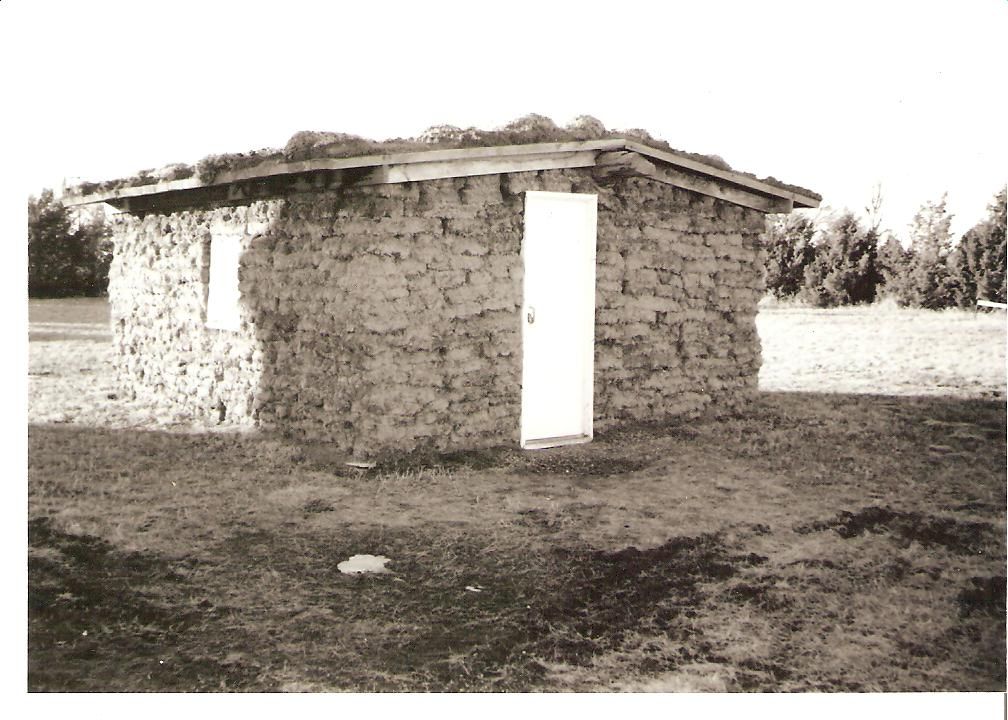
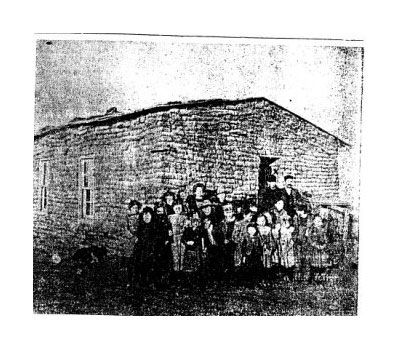
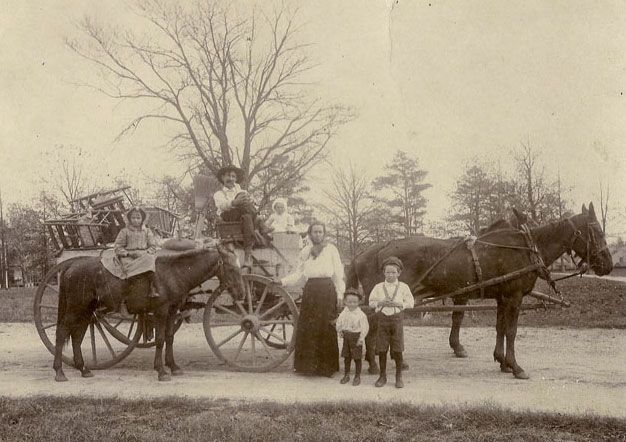
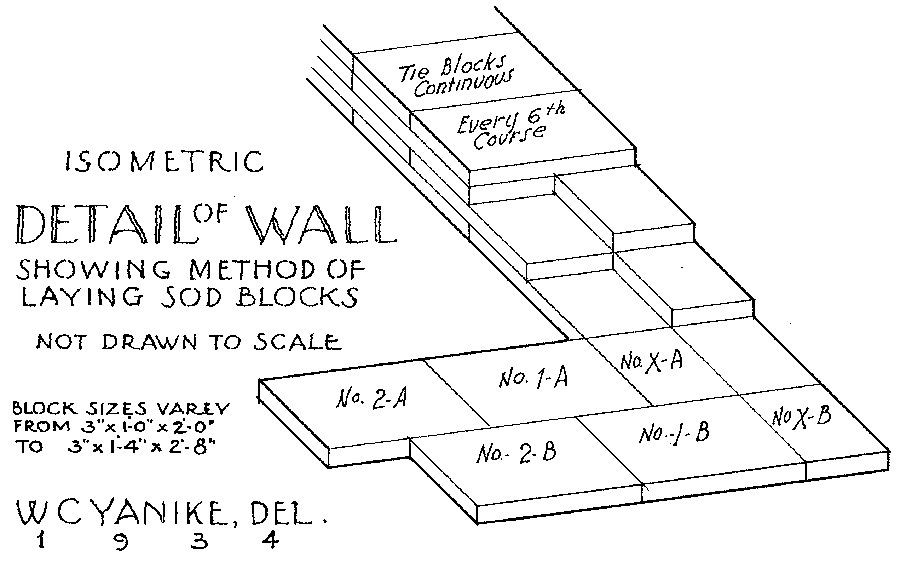
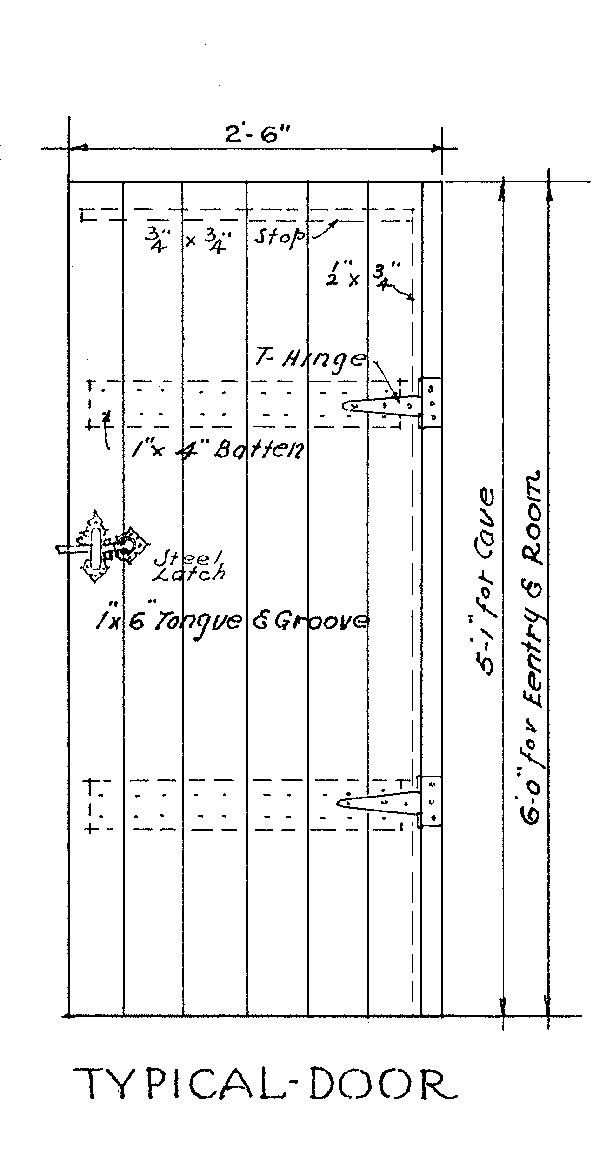
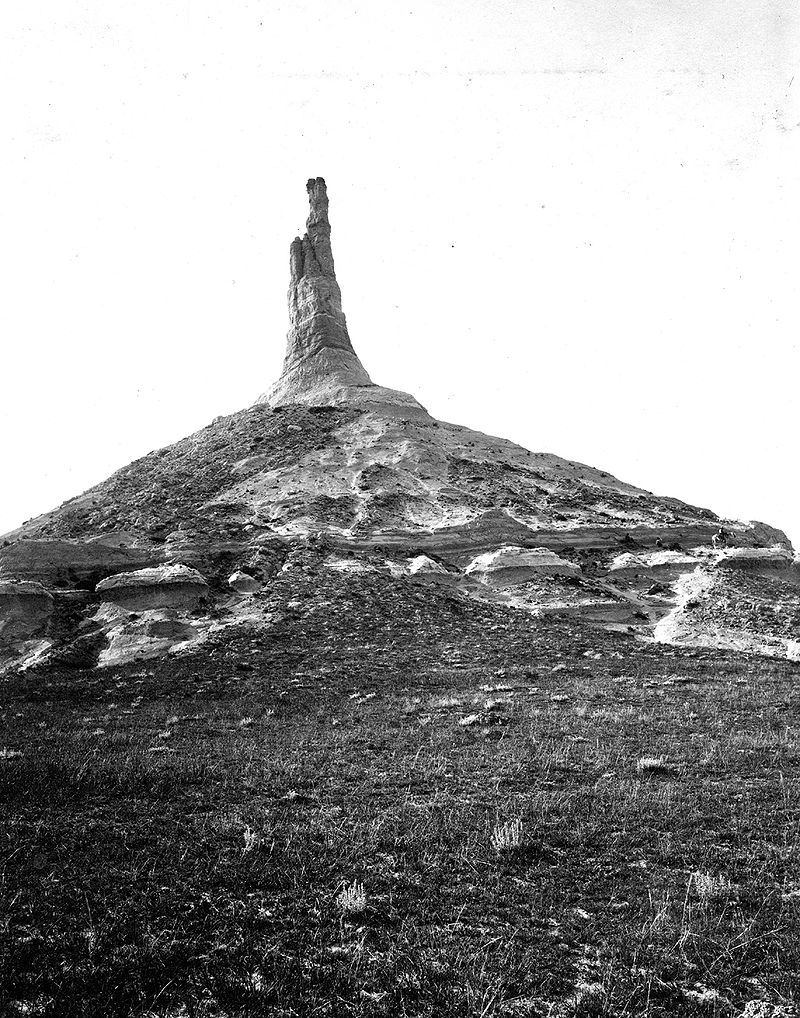
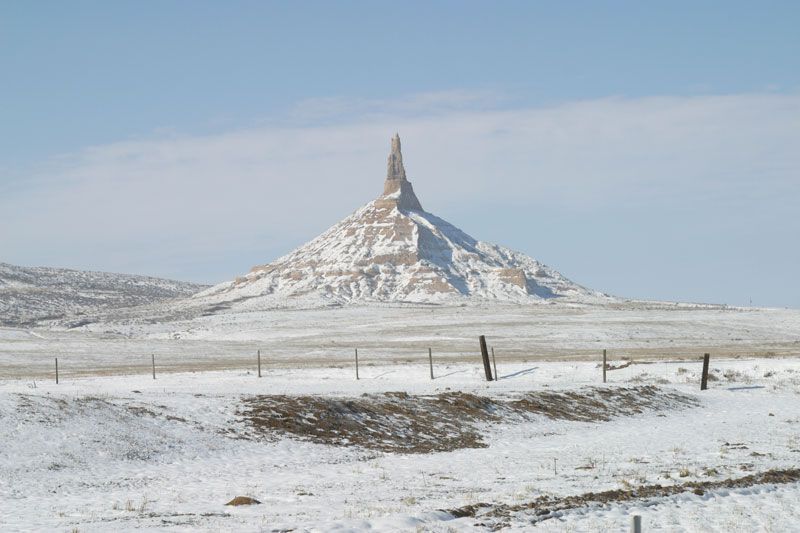
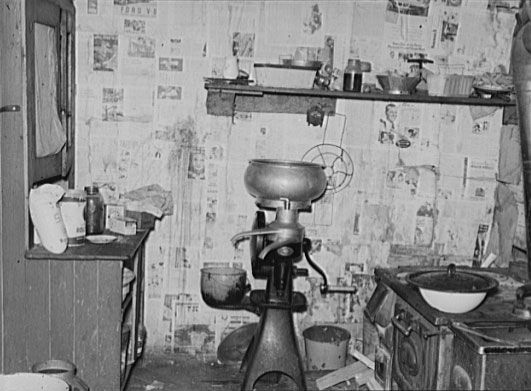
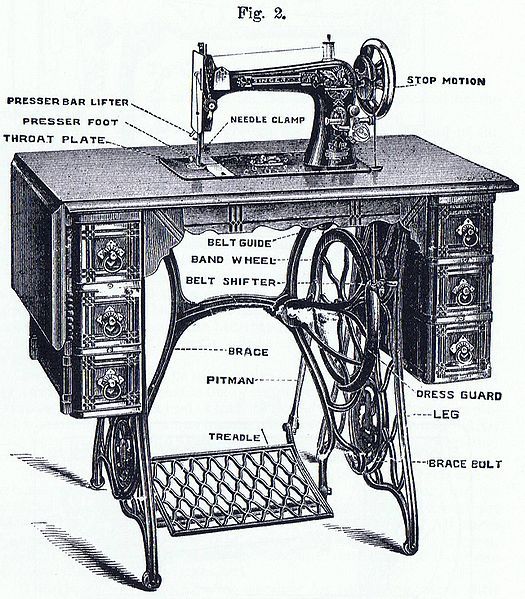



























View Comments
Larry,
I feel compelled to say that this is some of the finest writing I’ve had the privilege to read in quite some time. I’ve been fortunate enough to spend time in the West—Kansas, Colorado, Nebraska. My fiancé is from a little town in southeastern South Dakota, a place we travel often to visit her family. As a born and bred Easterner, the vastness of the prairie is both new to me and profoundly moving. It is your words, though, that have changed the memory of my experiences there. They have enriched them. It won’t be long before I head West again, and as I travel through the grasslands I’ll think of this piece. I look forward to reading more.
Thank You.
Larry,
I agree with my friend here and have enjoyed your thoughts and words. I could see every image you gave at the end, picturig all those things with loved ones by my side. Thank you.
Bob Y,
Thanks for the kind words. Coming from you, I take it as a real complement. Larry Haun
This is really intresting article.
Thank you for this wonderful perspective into our not too distant past.
I have long held a theory about the "plains" states that has thus far only seen limited exposure, so I'm happy to share my theory with the readers of Larry Haun's blog. The theory, to wit, is that the so called, "plains states" were once hilly states until the prolific and omnipresent buffalo, with many thousands of pounds of hoof pressure per square inch, roamed by the millions hither and yon and pounded the hills into plains.
Note that buffalo were never found in quantity in "non-plain" states that remained hilly or mountainous, therefore the theory holds true.
The work of British classical composer, George Friedrich Handel's, "Messiah", likely contains similar reference to the penchant of the buffalo to trample the earth into flat lands (albeit it is an oblique mention), in the oratorio, "And the valleys shall be exalted, and the mountains made plain..." which clearly is an unambiguous description of the "plains states", as described by Larry Haun. The buffalo likely had something to do with this flattening, so remember that you heard it here first!
In the early nineteen seventies, a couple of guys by the names of Art Boeriche and Barry Shapiro put together a couple of books, the first entitled, "Handmade Houses" published in 1973, and the second, "The Craftsman Builder" published in 1977, presenting photos and commentary of unusually built homes and structures made using recycled, reclaimed, or naturally existing materials, often constructed and arranged in novel methods (not always in accordance with accepted building standards of construction, he hastens to add).
The buildings seen in the "Handmade Houses" series were all unique and unusual. Mostly hidden away far off dirt roads in rural backwaters, these homes were the creations of love, ingenuity, and imagination, but not a one would likely meet the strict criterion of modern building codes, and they could not be legally built, except in those areas of the country where structural codes are not enforced and receiving a building permit only requires registering a location for a septic tank and drainfield, to ensure it is set far enough from natural water sources to prevent contamination (there are still many areas of the country where building inspectors do not roam, and neither do the buffalo).
The writers of "Handmade Houses" spoke of the home builders calling their structures, "potting sheds", "temporary pole barns", "the kid's tree house", or some other non-habitable appellation in order to throw off the machinations of the local building departments. Most of the structures were off the power grid, and far enough away from the highways and byways where no one knew or cared about their existence.
Where building code demands compliance, neither Larry Haun's mother's sod house, nor the "handmade houses" could be built. Today, modern construction methods and spreadsheets dictate the design, and as Lewis Mumford lamented in, "The Myth of the Machine", (paraphrasing), modern computer CAD renders every potential natural and evocative human design into a repetitious machine code that's only suitable for non-living machines.
As Larry mentions, is only modern Western man that assumes the burden of a thirty-year mortgage in order to live and work amongst his peers. Concomitant with that mortgage comes the marvels of our modern age with electrically energized appliances and utilities, running water, hygienically sound waste disposal, modern communications, and even the ability to magically enjoy reading a blog written and posted over digital internets. We trade one level of sophistication and awareness for another as the demands of time and place change, just as earlier builders used hand tools, while today we use power equipment.
Reading about "sod houses" and the environment and lifestyle from a bygone age is a great thrill, and describes a time and place that today only exists in our memories. Thanks to Larry's detailed descriptions, we can accurately picture the daily lives of those intrepid settlers and learn from their experience.
Besides, this is not strictly an academic treatment that's Larry's providing; there is no saying that our level of technological progress, utilities, and social services will continue into the future. War, plague, economic collapse, and you and I may very well be building our own sod houses, complete with root cellar and kerosene lamps for light.
So read the techniques carefully, and thanks again to one of my favorite teachers, Larry Haun. And watch out for buffalo.
Hi Larry,
I loved this glimpse into America's recent past. It's great writing and a very good story. I'm looking forwad to the next installment.
Patrick McCombe
Larry, I am in awe of your writing. My grandparents traveled in a covered wagon and homesteaded in Baca County, Colorado in a little town called Pritchett. It is still there. When I was 7 I took the adventurous ride on a freight train from Wichita, Kansas to Pritchett. I vaguely remember the two seater outhouse and grandma's bedside chamberpot. The canned goods were stored on shelves in a separate basement made of cinder block walls and a dirt floor. It was about 3 feet above ground so had windows. I was the fortunate one that always slept there with the spiders and an Aunt. It had a musty comforting smell. My aunts and uncles talked about living in dugouts as newlyweds and burning cowchips for fuel. Things got better for My younger newlywed parents who lived in new semicircular metal building they referred to as a chicken coop. Now you have me wanting to talk to my ancestors to get more details. Please tell us more.
Larry,
I always knew we had a lot in common, we share a history of hard working honest ancestors, from different race and country yet with the same need to survival. Just like them we are still in the daily struggle to survive, different times and conditions in life, but the struggle is the same.
For some people these type of events are past history, for some others, specially in underdeveloped countries this is daily life reality. So much for technological advances humanity has achieved, when there is poverty, hunger, lack of education, decent affordable housing, and the irreparable environmental damage progress had brought upon earth. Do we still have hope of ever seen what really matters in life, before is too late for all of us?
Great writing, Larry! I could see this tale making a very interesting book. Where do I pre-order my copy!?
Larry,
Nice piece of work! Fantastic writing, once again. Much of your writing is about how to build stuff. Can you offer any insight into how you got to be such an excellent author? Your talent is both inspiring and intimidating to this wanna-be writer.
With Respect,
Matt
Dear Matt,
Thanks for your kind words. Wish I could study with you and learn more about building with timber.
As a writer----about all I have to offer to the writing world is courage. By that I mean---courage to write as best I can and to put it out there for anyone to see.
As a student in our isolated rural high school, I went through those 4 years and never once was asked to write an entire paragraph. I have never taken a writing course in any Univ. or even advanced English courses.
I have learned to write because I had the courage to write. I try to write simply and from the heart. Over the years, many editors at Fine Homebuilding magazine and books have helped me to improve my writing skills. Much credit goes to them.
So---please write. If I can do it, you can also.
Larry Haun
Larry -
Your visions have such depth and genuineness that I can savor and see what you describe, I always hear your heart in your writing.
It is refreshing to read about people who took responsibility for themselves, who didn't expect anyone to do things for them except as they traded labor or money. There wasn't any sense of entitlement. They either starved out, moved, or through their own enterprise, made it.
I liked what you said about wishing for the old days, I have struggled to put into words what it is I wish for, thank you for the answer.
This is the start of a great book, please, please continue.
BettyB
Hi Uncle Larry, I love the blog. It's beautifully written; I especially like how you weave in and out of past and present, sustainable and "modern". I remember reading in a book called Custer and Crazy Horse: The Parallel Lives of Two American Warriors by Stephen Ambrose about how when the Native Americans were first forced to live on the Reservations, they were given wooden houses to live in. What was interesting to me was that the majority of them ended up building and living in tepees in the yard and abandoning the house claiming that they were dirty and couldn't keep them clean. The white folks couldn't understand how the the Natives lived in the dirty tepees. As it turns out, when the tepee area got too dirty, they would just pack it up and move to a new spot thereby letting nature clean up the old spot. The houses they couldn't move and they also couldn't figure out how to use the brooms and other cleaning tools that they were given to keep them clean. Talk about a big misunderstanding.
I have grown up hearing about granma's sod house and seen the large pictures in my dad's house, but I had never heard about it in it's historical context with such detail, I love it. Maybe that's why I have spent my whole life figuring out how to get out of cities and stay out. No wonder I take pleasure in tending my chickens, horses, garden and wood pile, it's in my blood!
From your loving niece
Well maybe the heat of the SFV was not such a big deal to you after reading this essay.
I do recall and feel that the best of the carpenters or at least a lot of them were farm boys.
I got into framing because of two brothers one which was a carpenter. That would be the Klocows, Bill and Joe, from Minnesota. Bill was the carpenter. Both were hard and fast workers, fast because they just did not stop, had focus and were pretty systematic at what ever the task was.
Joe, though not a carpenter was willing to analyze any task or problem with you and I had a lot of conversations with him. It was a part of daily conversation and working things out and planning for the next day-week- month.
When I was raised the conversation might of been about chores and school work but it did not get into the nitty gritty details like having a conversation with a farm raised person!!
So my observation of farm raised carpenters- workers and businessmen. This was a like going to University for me!!
I have a ton of stories about these guys.
Larry,
Wonderful writing and pictures. Hats off to you and thanks for preserving one of the finest eras in Plains history.
I'm fortunate at age 58 to know a bit about sod houses and buffalo roaming the plains of Nebr. My grandparents built their soddy in 1917, which was very late compared to most with the notion that soddies were of the 1860's to 1890's. Western Nebraska was late to settle as the land could be inhospitable with little rain, never ending wind, sandy ground and long cold winters. I'm fortunate to have had 13 sets of grandparents and their brothers and sisters tough enough to try and eek out a living. They hand built their homes with few tools and a lot of grit.
My grandparent's soddy was warm in the winter, cool in the summer and a mansion, as it had 2 rooms. I slept and played in this house. I will find an interview with my father who explained how they cut the sod and built the soddy and share in another comment, if anyone is interested.
WritersCramps comment made me smile as thinking the buffalo flattened the plains. My mother has a prehistoric camel jaw bone that was found in the sandhills of the plains. We have museums full of perhistoric animal bones who once roamed this desert land so it was probably worked on by others too. The buffalo followed the best grass to graze. The short grass prairie plants provided the most nutrition and their wallows are still seen today. Pioneer accounts of the 1850's said Nebraska looked like a brown moving carpet with herds 5 to 10 miles wide and never ending in length.
Thank you Larry for talking about sod houses. Humans are resourceful and adaptable using the materials at hand to make a home. I'd be happy to share what my father wrote about their soddy, which still stands today. If you're interested I could send a picture of a sod house window frame that I have at my home.
Well, you've gone and dun it again, Larry: I am, again, inspired by your thoughtful words of wisdom!
You left one thing out when you talked about the Europeans thinking that they could own the earth and take what they wanted from the original native caretakers. I believe you said anybody could have the land, but I think that only applied to white males. That was the American policy of manifest destiny, which, I believe meant that it was God's will that they should take the land for their own purposes by any means necessary, including genocide and complete decimation of native culture. Sorry if this doesn't sound patriotic, but I think we, as Americans should be honest about our history.